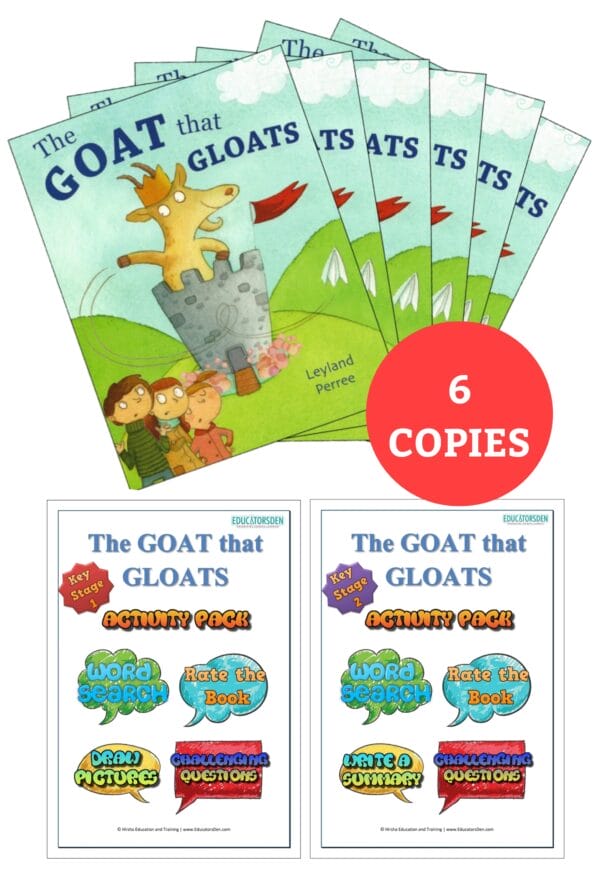A Teacher’s Guide to Guided Reading Techniques in the Classroom
Guided reading has become a foundational technique in literacy instruction, offering an effective way to meet students where they are in their reading journey.
By providing structured support tailored to small groups, teachers can foster reading skills and confidence at a personalised level.
If you’re looking to refine your guided reading practice or start from scratch, this guide breaks down essential techniques and strategies to help every student become a more capable and enthusiastic reader.
1. Understanding Guided Reading
Guided reading is more than just reading with students; it’s a process of targeted instruction designed to develop fluency, comprehension, and a love for reading.
In guided reading sessions, teachers work with small groups of students who have similar reading abilities or needs. Each group reads a text chosen to challenge yet support them.
Through this approach, teachers can provide scaffolding that helps students progress at their own pace.
2. Setting Up Effective Guided Reading Groups
Creating your guided reading groups is crucial to the success of your instruction. Here are a few tips to consider:
- Assess First: Use assessments to understand each student’s reading level. Benchmark assessments, informal running records, or even one-on-one read-aloud sessions can provide valuable insights into each student’s strengths and areas for growth.
- Keep Groups Dynamic: Reading abilities develop quickly, especially in early grades. To maintain each student’s progress, regularly reassess and reorganise groups as needed.
- Group Size Matters: Aim to keep guided reading groups small—ideally three to six students. This allows for focused, meaningful interaction without overwhelming the group with too many voices.
3. Preparing Your Texts and Materials
Selecting the right text for each group is essential for guided reading success. Here’s how to ensure your materials meet the needs of each session:
- Choose a Just-Right Text: The book or passage should be slightly challenging, allowing students to practice new skills with teacher support. Look for texts that are at the students’ instructional level—hard enough to promote growth but not so hard that they become frustrating.
- Think About Theme and Engagement: High-interest texts that connect to students’ lives or classroom themes can spark greater engagement. When possible, choose books that feature diverse characters, engaging plots, or themes relevant to students’ experiences.
- Pre-Teach Vocabulary: Introduce unfamiliar vocabulary before diving into the reading. This helps students approach the text with greater confidence and reduces potential stumbling blocks along the way.
4. Starting the Guided Reading Session: Tips and Techniques
Begin each guided reading session with a clear purpose, preparing students to make the most of the time:
- Set Objectives: Explain what skills or strategies you’re focusing on for the session. Whether it’s making predictions, identifying the main idea, or understanding character motives, students benefit from knowing the purpose of their reading.
- Model Good Reading Behaviours: Demonstrate strategies like decoding, questioning, and self-correction. This approach shows students how proficient readers approach unfamiliar words or challenging sections.
- Encourage Predictions and Connections: Engage students by asking them to predict what the text might be about or connect it to something they already know. This prepares their minds for reading and enhances comprehension.
-
Product on sale
 The Goat that Gloats: 6-Book Guided Reading Pack (With Downloadable After-Reading Activities)Original price was: £35.94.£23.99Current price is: £23.99.
The Goat that Gloats: 6-Book Guided Reading Pack (With Downloadable After-Reading Activities)Original price was: £35.94.£23.99Current price is: £23.99. -
 The Goat that Gloats Picture Book & Free Downloadable Activity Packs£5.99
The Goat that Gloats Picture Book & Free Downloadable Activity Packs£5.99
5. During Reading: Foster Independence and Comprehension
As students read, your role is to guide, not to do the reading for them. Here are ways to support comprehension and foster independence:
- Prompt, Don’t Solve: Encourage students to apply reading strategies they’ve learned, such as decoding or looking at context clues. If a student struggles with a word, prompt them with a question like, “What sound does it start with?” or “Can you think of a word that might fit here?”
- Ask Open-Ended Questions: Encourage deeper comprehension by asking questions like, “Why do you think the character did that?” or “What do you think might happen next?” Open-ended questions encourage students to think critically and connect with the text.
- Encourage Self-Monitoring: Teach students to recognize when they’re not understanding a section and to re-read or ask questions. Self-monitoring is a valuable skill that will help them become independent readers.
6. Post-Reading Reflection and Discussion
After reading, take a few moments to reflect on the session and reinforce comprehension:
- Summarise Together: Ask students to summarise what they read or share a favourite part of the story. This practice reinforces comprehension and helps you assess their understanding.
- Revisit Learning Goals: Reflect on the session’s objectives. Did students grasp the concept? What can you focus on next time to deepen their understanding?
- Celebrate Small Wins: Recognise each student’s progress, no matter how small. Positive reinforcement encourages confidence and a love for reading.
7. Assessing and Adapting
Guided reading is a dynamic process. Regularly assess each student’s progress and be willing to adapt your techniques. When students hit a milestone, celebrate it with them and adjust their group or reading level as needed.
The key takeaway
Guided reading, with its personalized approach, is a powerful tool for developing skilled, confident readers.
By setting up effective groups, selecting just-right texts, and providing thoughtful guidance, you can create a supportive environment where students thrive.
With patience, practice, and a bit of creativity, your classroom can be a place where every child feels empowered to grow as a reader.
Join our mailing list
Sign up to our Emailing List & Get the Latest Information and Offers on Resources
Thank you for joining !
Something went wrong.






